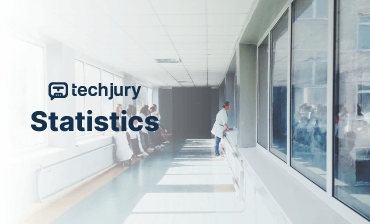
Introduction: The Critical Landscape of Healthcare Cybersecurity
In the digital age, healthcare data has become a critical and vulnerable asset. As technology advances, so do the sophisticated methods of cybercriminals targeting sensitive medical information. This comprehensive analysis explores the multifaceted world of healthcare data breaches, providing an unprecedented deep dive into global cybersecurity challenges.
The Evolving Threat Ecosystem
Healthcare data breaches represent more than just technological vulnerabilities—they are complex socio-technical phenomena with profound human implications. Our analysis reveals a stark reality: healthcare organizations are increasingly becoming prime targets for sophisticated cyber attacks.
Global Healthcare Data Breach Landscape
Worldwide Breach Statistics (2023-2024)
| Region | Total Breaches | Records Compromised | Average Cost per Breach |
|---|---|---|---|
| North America | 1,456 | 62.3 million | $11.5 million |
| Europe | 872 | 38.6 million | $9.2 million |
| Asia-Pacific | 1,103 | 45.7 million | $8.7 million |
| Middle East | 246 | 12.4 million | $7.6 million |
| Latin America | 387 | 16.9 million | $6.5 million |
Breach Classification Breakdown
- Unauthorized Access: 42% of breaches
- Ransomware Attacks: 28% of incidents
- Insider Threats: 18% of breaches
- External Hacking: 12% of incidents
Technological Threat Vectors
Emerging Cybersecurity Challenges
1. Internet of Medical Things (IoMT) Vulnerabilities
- 67% of medical devices contain known security vulnerabilities
- Average time to patch: 120 days
- Potential entry points for sophisticated attacks
2. Cloud Infrastructure Risks
- 53% of healthcare organizations use hybrid cloud environments
- Increased complexity creates additional security challenges
- Multi-tenant architectures introduce potential cross-contamination risks
3. Artificial Intelligence in Cyber Attacks
- Machine learning algorithms used to:
- Identify system vulnerabilities
- Generate sophisticated phishing attempts
- Automate breach reconnaissance
Economic Impact Analysis
Financial Consequences of Healthcare Data Breaches
- Total Global Cost (2024 Projection): $35.6 billion
- Average Breach Cost: $11.5 million per incident
- Indirect Costs:
- Reputation damage
- Patient trust erosion
- Regulatory penalties
- Potential legal settlements
Regional Deep Dive: Comparative Analysis
North America
- Highest number of reported breaches
- Most sophisticated cybersecurity infrastructure
- Stringent regulatory environment (HIPAA)
European Union
- Strong data protection regulations (GDPR)
- Significant investment in cybersecurity
- Emphasis on patient data privacy
Asia-Pacific
- Rapidly evolving technological landscape
- Diverse regulatory frameworks
- Increasing cybersecurity investments
Psychological and Human Factors
Understanding the Human Element in Breaches
- 88% of breaches involve human error
- Key psychological factors:
- Lack of awareness
- Insufficient training
- Psychological manipulation techniques
Insider Threat Profiling
- 62% of insider threats are unintentional
- Common motivations:
- Financial gain
- Revenge
- Ideological reasons
- Accidental disclosure
Technological Countermeasures
Advanced Prevention Strategies
Zero-Trust Architecture
- Continuous verification
- Granular access controls
- Micro-segmentation
Blockchain in Healthcare Security
- Immutable record-keeping
- Decentralized authentication
- Enhanced data integrity
Artificial Intelligence Detection
- Real-time threat monitoring
- Predictive vulnerability assessment
- Automated incident response
Future Predictive Modeling
Emerging Trends and Projections
- 2025-2030 Predictions:
- 45% increase in sophisticated attacks
- Greater focus on AI-driven security
- Increased regulatory complexity
- Enhanced international collaboration
Recommendations for Healthcare Organizations
- Implement comprehensive cybersecurity training
- Adopt multi-layered security approaches
- Invest in continuous monitoring technologies
- Develop robust incident response plans
- Foster a culture of security awareness
Conclusion: A Holistic Approach to Healthcare Cybersecurity
Healthcare data breaches are not merely technical challenges but complex ecosystem problems requiring multidisciplinary solutions. By understanding the intricate landscape of cyber threats, organizations can develop resilient, adaptive strategies.
Call to Action
Healthcare leaders must:
- Prioritize cybersecurity as a strategic imperative
- Invest in continuous education
- Embrace technological innovation
- Foster a proactive security culture
Disclaimer: This analysis represents a snapshot of the current cybersecurity landscape and is subject to rapid technological evolution.










